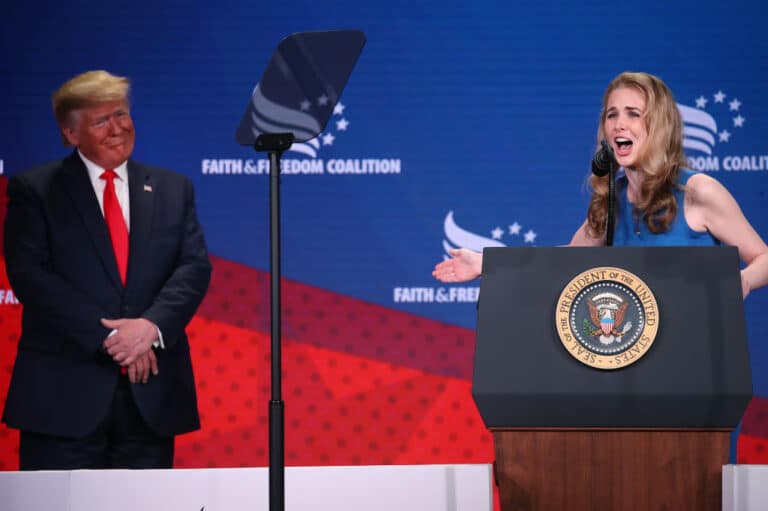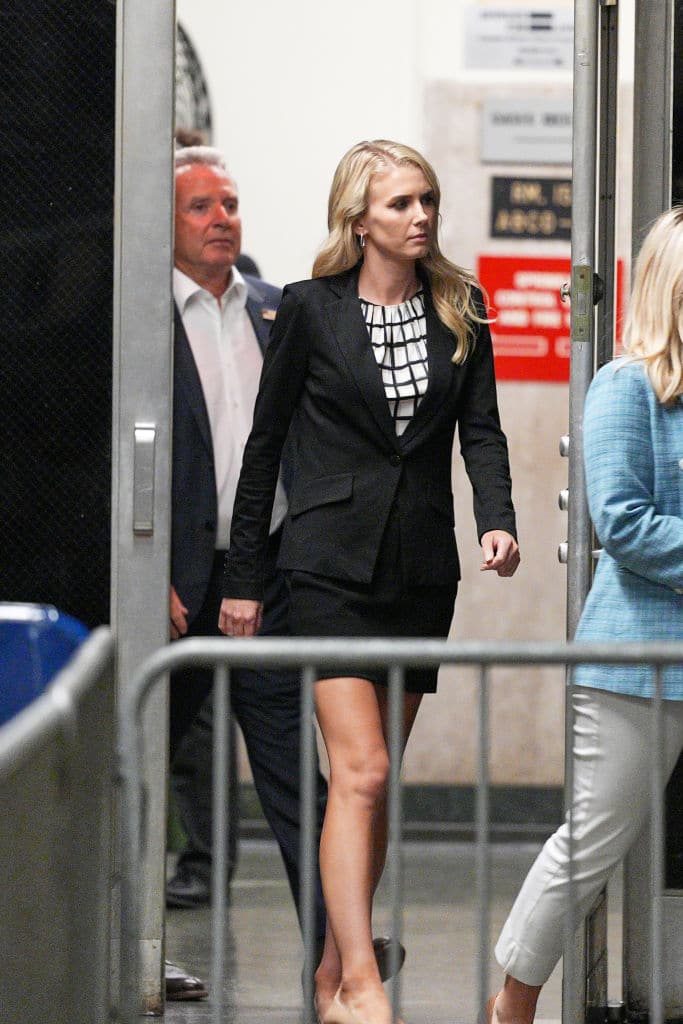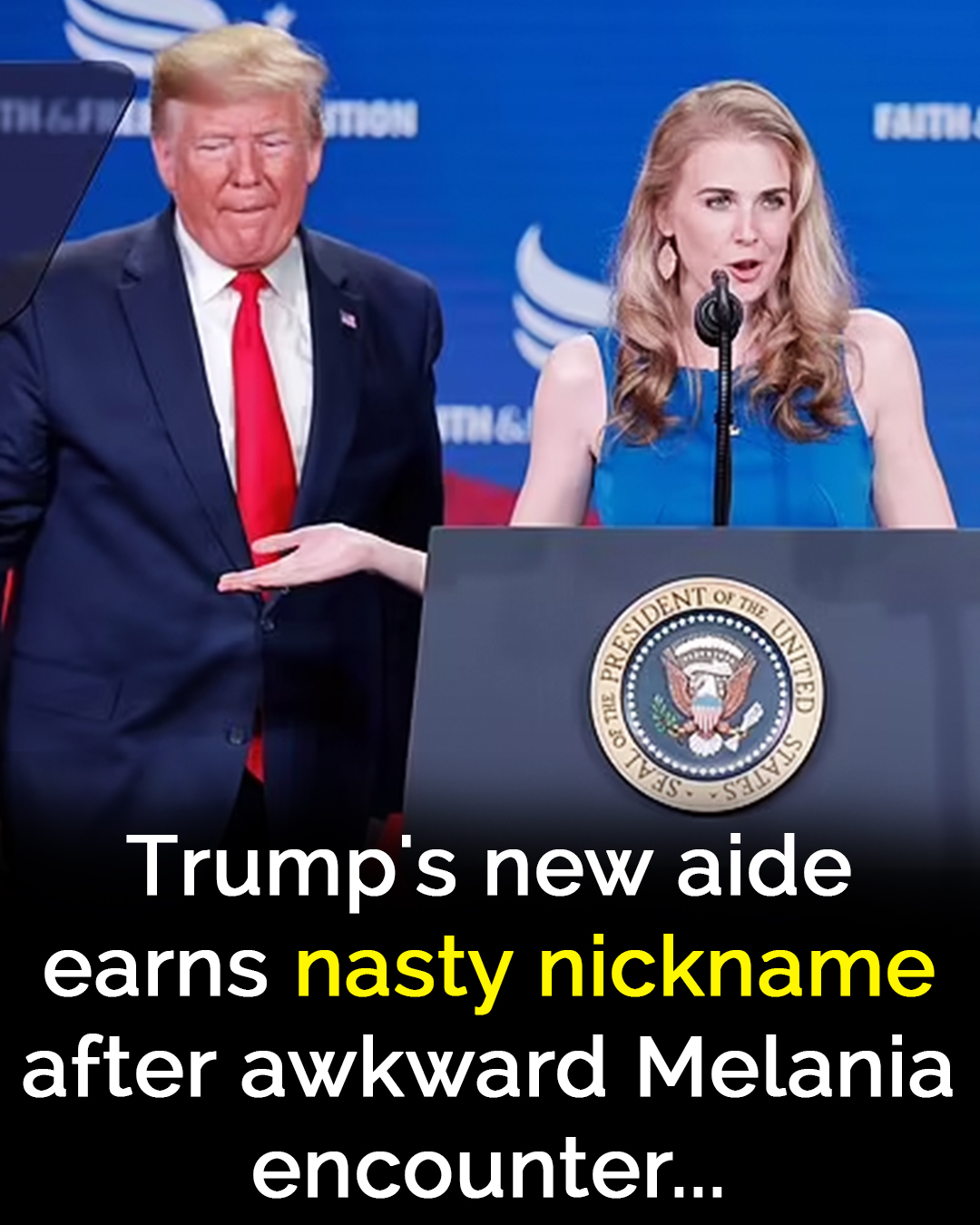Natalie Harp may not be a household name, but within Donald Trump’s inner circle, she holds a unique and indispensable position. So much so that she has been dubbed “unfireable,” a title that speaks to the level of trust and influence she has gained.
Getting close to Trump requires a particular skill set, and according to some, one of the most effective methods involves being young, blonde, and exceptionally devoted to the former president. Harp, a former far-right cable news host, fits that description perfectly. Her unwavering loyalty to Trump has not only earned her a job in his orbit but has positioned her as one of his most trusted aides.
Born in 1991, Harp grew up in a conservative Christian family in California. Her father was an estate agent who later founded a marketing and branding consultancy for travel companies, while also leading an “office of innovation” at a private Christian university. Harp attended Point Loma Nazarene University, a Christian liberal arts college in San Diego, from 2009 to 2012, before earning an MBA from Liberty University, an evangelical college in Virginia.

In 2019, Harp, a bone cancer survivor, made headlines when she credited Trump’s “Right to Try” law with saving her life. During a Fox News interview, she claimed that the law had allowed her access to experimental drugs that she otherwise wouldn’t have been able to receive. Her remarks gained national attention, and she later spoke at the Republican National Convention, comparing Trump to George Bailey from It’s a Wonderful Life, stating that “without you, I’d have died waiting for [experimental drugs] to be approved.”
Her statements, however, were met with skepticism from medical experts. Former FDA official Peter Lurie and health sciences professor Jeremy Snyder pointed out that Harp had actually received an FDA-approved immunotherapy drug for an unapproved use, a practice that had been permissible even before the “Right to Try” law was enacted.

Following her public praise of Trump, Harp transitioned into media and became an anchor for One America News Network (OANN), a far-right cable channel known for its unwavering support of Trump and its promotion of conspiracy theories. While at OANN, she repeatedly pushed Trump’s false claims that the 2020 election had been stolen. But by 2022, she had left the network to join Trump’s communications team, taking on a role that extended beyond media outreach. Her responsibilities included accompanying Trump on his daily golf outings, often riding alongside him in a golf cart equipped with a laptop and a printer, ensuring he had immediate access to favorable news articles and social media content.
Her growing influence became even more evident when she joined Trump’s 2024 campaign. She was credited with posting a controversial video referencing a “unified Reich” on Trump’s Truth Social account—an incident that led to the post being deleted just hours later. Additionally, she posted messages on Trump’s behalf and even sent aggressive texts in his name to a major campaign donor, complaining about the people running his super PAC. This was particularly noteworthy given that the group was pouring millions into pro-Trump advertisements across key states.
Harp’s dedication to controlling Trump’s media consumption and ensuring he was constantly fed positive news earned her the nickname “Human Printer.” Sources described how she would follow Trump with a portable printer and battery pack, running after him on golf courses to hand him hard copies of news clips that flattered him. According to The Times, she relied heavily on sources like Gateway Pundit, a far-right website notorious for promoting false information and conspiracy theories.
Her obsession with Trump, however, went beyond her role as his media gatekeeper. In his book Revenge: The Inside Story of Trump’s Return to Power, journalist Alex Isenstadt described how Harp maneuvered her way into Trump’s inner circle, often disregarding professional boundaries. One particular incident raised eyebrows within Mar-a-Lago—Melania Trump allegedly stumbled upon Harp in Trump’s private quarters late at night, a space usually off-limits to anyone outside the family. Harp had entered to deliver documents to Trump, unwilling to wait until morning.
This behavior alarmed more than just the First Lady. Excerpts from Michael Wolff’s book on Trump detailed how Secret Service agents had come to view Harp as a “potential danger to herself as well as to the president.” Another unusual event occurred aboard “Trump Force One” when Harp wandered into Trump’s unoccupied bedroom while the plane was being used as a decoy.

Despite these questionable actions, Trump never seemed bothered. In fact, Harp’s devotion earned her a new, less flattering nickname among campaign staffers—“Fatal Attraction.” The reference likened her to Glenn Close’s character, Alex Forrest, from the 1987 thriller Fatal Attraction, where an obsessive woman becomes dangerously fixated on a married man. The comparison was fueled by her intense loyalty and the perception that she would do anything to stay close to Trump.
While some found the “Human Printer” moniker amusing, the “Fatal Attraction” label suggested a more unsettling dynamic. Isenstadt noted that Trump advisers frequently joked about her resemblance to the obsessive movie character, highlighting just how deeply embedded she had become in Trump’s daily life.
Campaign insiders reportedly found Harp’s presence frustrating, but no one could remove her. According to Isenstadt, “As much as those in the senior ranks wanted Natalie gone, they knew she was unfireable.” Trump had grown too reliant on her to let her go.
Her role became indispensable—if Trump wanted to post an inflammatory message on Truth Social, Harp was there to make it happen. If he needed a news article spun in his favor, she was the one to print it out and ensure he saw it. If he wanted a Republican lawmaker to see a particular news clip, she would text it to them immediately.
No matter how many people in Trump’s circle viewed her as an issue, one fact remained: Harp had solidified her place. She had become more than just an aide—she was an extension of Trump’s media persona, the gatekeeper of the information that reached him, and the most unfireable person in his orbit.
